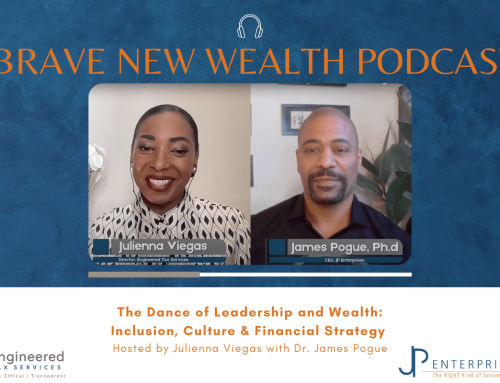When I teach dance, I often ask my students:
“As a leader in a partner dance, what is our job?”
There are usually many responses, both from the leads and the follows.
Then I share my answer:
“To create an environment where our partner is comfortable being and feeling exactly what they want; whether that’s strong or vulnerable, seen or hidden, fearless or uncertain.”
Then, I ask the next question:
“As a follower in a partner dance, what is our job?”
What happens next—almost 100% of the time—is silence. Prolonged silence. The only response I consistently hear is: “To follow.”
Why the difference?
We have spent generations elevating the role of the leader. Leadership is celebrated, studied, and rewarded. But we have not given the same attention or value to the role of the follower. And today, we are seeing the consequences of that imbalance in organizations, industries, and relationships.
We have people running away from the role of follower, even when it is where they thrive.
And we have people stepping into leadership, even when it is not where they want to be.
How well do you understand your role in connection—whether leading or following? The Connection Quotient (CQ) helps you see where you stand and how to work better with others. Find out your CQ.
The Reality of Leadership and Followership in Business
Leadership and followership are not fixed roles. A person can lead in one space and follow in another. A CEO might lead their company but follow their coach or mentor. A senior executive might lead their department but follow a strategic vision set by the board.
Yet in corporate culture, the term follower has been replaced by words like team member or collaborator. While teamwork is essential, this shift has blurred individual accountability. A high-performing organization requires both strong leaders and strong followers. And the best leaders? They understand when to follow.
The same dynamic plays out in households, partnerships, and friendships. We have moved away from recognizing followership as a skill, and in doing so, we have lost a key component of accountability, trust, and execution.
What We Can Learn from Dance
Let’s take three fundamental truths from partner dance and apply them to leadership and business:
- You cannot have a partner dance without a leader and a follower.
The same is true in organizations. Without skilled followers, leadership is ineffective. - Leaders and followers have clearly defined and complementary roles.
In the workplace, the best teams thrive when each member understands their role, whether they are setting a strategy or executing it. - In the most experienced partnerships, leaders follow, and followers lead.
Great leaders know when to listen, adapt, and take direction. Skilled followers contribute ideas, shape execution, and hold leaders accountable.
The Business Case for Elevating Followership
We often discuss leadership development in business, but how often do we invest in followership development?
Organizations struggle when there are too many leaders— “too many cooks in the kitchen.”
They also struggle when there are only followers— “where is the vision?”
Instead of labeling people as leaders or followers, we should recognize the critical value of followership as a skillset. Effective followership is being adaptable, accountable, and proactive, drives execution, innovation, and team cohesion.
Building a Culture of Leadership and Followership
For leaders:
- Create a vision and communicate it clearly.
- Build an environment where your team can perform at their best.
- Recognize when to step back and listen.
For followers:
- Develop active listening skills beyond what is obvious.
- Clarify expectations and limitations without blame.
- Execute the leader’s vision while providing critical insight and support.
Mastering followership is just as valuable as mastering leadership. And the most effective professionals learn to move between both roles seamlessly.
Winning in business—and in life—requires work, adaptability, and a deep understanding of your role within a larger system.
Partner dance provides a model of clarity and balance. Perhaps it’s time to (re)take a few dance classes and experience what true leadership and followership feel like in action.
Strong teams and relationships rely on both leaders and followers who know how to connect. The Connection Quotient gives you a clear picture of your strengths and areas to improve. See where you stand.





